 August
24
August
24
Tags
Sixteenth-Century Feminist: Lavinia Fontana
 On the 24th of August 1552, Italian painter Lavinia Fontana was born in Bologna. She is considered the first ever woman artist to work within the same sphere as her male counterparts, independently and outside a royal court or convent. “The most significant and prolific female artist of the 16th century, Lavinia Fontana opened up opportunities for successive generations of women artists throughout Europe. Like most of her counterparts, she received her initial training from her father, Prospero Fontana, a painter who had studied under the Mannerist Florentine artist and writer Giorgio Vasari. She was his only surviving child. Encouraged by her father to develop her artistic potential, early in her career she received both public and private commissions in Bologna. He arranged an introduction to a nobleman and artist from Imola, Gian Paolo de’ Zappi, and then arranged their marriage in 1577. Although both Zappi and Fontana are listed as members of the prestigious Accademia di San Luca in Rome, Murphy claims that Zappi was not a painter. Unlike most marriages then (and still), it was Zappi, not Fontana, who assumed the domestic role, looking after their many children. He also assisted his wife with her paintings, mostly backgrounds, and managed the family finances. To enhance his daughter’s suitability (perhaps in lieu of a substantial dowry) Prospero, in fact, offered his prospective father- in-law, Count Severo de’ Zappi, his daughter’s potential earning power. (…) Fontana became the family’s primary support, even sharing her earnings with her father.” (Liana De Girolami Cheney, review of Lavinia Fontana: A Painter and Her Patrons in Sixteenth-Century Bologna by Caroline P. Murphy, in Woman’s Art Journal, Vol. 26, No. 2, Autumn, 2005 – Winter, 2006).
On the 24th of August 1552, Italian painter Lavinia Fontana was born in Bologna. She is considered the first ever woman artist to work within the same sphere as her male counterparts, independently and outside a royal court or convent. “The most significant and prolific female artist of the 16th century, Lavinia Fontana opened up opportunities for successive generations of women artists throughout Europe. Like most of her counterparts, she received her initial training from her father, Prospero Fontana, a painter who had studied under the Mannerist Florentine artist and writer Giorgio Vasari. She was his only surviving child. Encouraged by her father to develop her artistic potential, early in her career she received both public and private commissions in Bologna. He arranged an introduction to a nobleman and artist from Imola, Gian Paolo de’ Zappi, and then arranged their marriage in 1577. Although both Zappi and Fontana are listed as members of the prestigious Accademia di San Luca in Rome, Murphy claims that Zappi was not a painter. Unlike most marriages then (and still), it was Zappi, not Fontana, who assumed the domestic role, looking after their many children. He also assisted his wife with her paintings, mostly backgrounds, and managed the family finances. To enhance his daughter’s suitability (perhaps in lieu of a substantial dowry) Prospero, in fact, offered his prospective father- in-law, Count Severo de’ Zappi, his daughter’s potential earning power. (…) Fontana became the family’s primary support, even sharing her earnings with her father.” (Liana De Girolami Cheney, review of Lavinia Fontana: A Painter and Her Patrons in Sixteenth-Century Bologna by Caroline P. Murphy, in Woman’s Art Journal, Vol. 26, No. 2, Autumn, 2005 – Winter, 2006).
In her book, Lavinia Fontana: A Painter and Her Patrons in Sixteenth-century Bologna (Yale University Press, 2003), Caroline P. Murphy examined the significant role played by several female artists’ fathers at this time in Europe in their career developments, including Sofonisba Anguissola of Cremona, Barbara Longhi of Ravenna, Marietta Tintoretta of Venice, and Katerina van Hemessen of Basel. Murphy found interesting new angles on gender manipulation in Bolognese society at the time and reasons as to why a female artist such as Fontana would have been used by nobility. One example was an eminent member, who purposely commissioned a female painter to paint an altarpiece for his marriage to cover a sex scandal. “He wished to associate himself with women wherever he could, as a means of obliterating his sodomitic crime from the memory of the citizens of Bologna,” Murphy wrote.
on gender manipulation in Bolognese society at the time and reasons as to why a female artist such as Fontana would have been used by nobility. One example was an eminent member, who purposely commissioned a female painter to paint an altarpiece for his marriage to cover a sex scandal. “He wished to associate himself with women wherever he could, as a means of obliterating his sodomitic crime from the memory of the citizens of Bologna,” Murphy wrote.
The city of Bologna’s specific economic, religious, and social structure supported the academic and artistic talents of women as well as their patronage. Unusually, women were educated at the University of Bologna ever since the Middle Ages and all Bolognese painters claimed the painter-nun Caterina dei Vigri (c. 1413-63) (Saint Catherine of Bologna) as their patron saint.
Lavinia Fontana became famous painting various high society ladies of Bologna and Rome. Her careful attention to the detail of clothing, jewellery, and ornaments, as well as her insight into each sitter’s personality and social status, endeared her to a wealthy clientele. They became her most loyal patrons: married women, mothers, and widows. Although there were many talented painters in the city, c. 1580, “Bolognese noblewomen found in Lavinia Fontana an artist who by virtue of her gender and demeanour they could claim for themselves…. They competed with each other to secure Lavinia’s services and the possession of a portrait by her was a marker of both fashion and status for this female elite.” (Caroline P. Murphy). Female patronage and its endorsement of female celebrity was seen as natural and benefited the city as a whole.
The most interesting relationship between the painter and the sitter was to be noted in her commissions for widows. Murphy argues that Fontana’s portraits reveal an untraditional de-emphasis on piety, otherwise expected during the Counter-Reformation, perhaps reflecting a different view of the pious enclosure recommended for widows by male moralists. The widows of Bologna seemed socially and culturally active instead of following a self-enforced isolation, as demanded by the Venetian Ludovico  Dolce in his Dialogo della istitutione delle donne (Venice, 1557). In her book, Murphy stressed the fact that the Bolognese widows wanted to leave behind a “visual legacy, which recorded their state and their commitments to family, faith and philanthropy, as well as, through their clothing, their commitment to widowhood itself.” ( Lavinia Fontana: A Painter and Her Patrons in Sixteenth-century Bologna ). In many ways, Fontana managed to rewrite the history of feminist art in reverse. If we consider Linda Nochlin’s famous 1973 essay “Why have there been no great women artists?”, we find that Fontana was able to develop a successful career as a painter not despite her gender, but because of it, and what an achievement that was for a sixteenth-century woman!
Dolce in his Dialogo della istitutione delle donne (Venice, 1557). In her book, Murphy stressed the fact that the Bolognese widows wanted to leave behind a “visual legacy, which recorded their state and their commitments to family, faith and philanthropy, as well as, through their clothing, their commitment to widowhood itself.” ( Lavinia Fontana: A Painter and Her Patrons in Sixteenth-century Bologna ). In many ways, Fontana managed to rewrite the history of feminist art in reverse. If we consider Linda Nochlin’s famous 1973 essay “Why have there been no great women artists?”, we find that Fontana was able to develop a successful career as a painter not despite her gender, but because of it, and what an achievement that was for a sixteenth-century woman!
Feature Image: Lavinia Fontana, Portrait of Bianca degli Utili Maselli, Half-Length, in an Interior, Holding a Dog and Surrounded by Six of her Children, c. 1603-5, oil on canvas, 39 × 52.5 in (99.1 × 133.4 cm), Sotheby’s. A prime example of matriarchal confidence and strength.
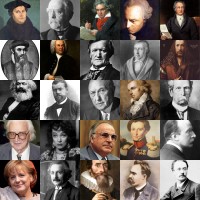


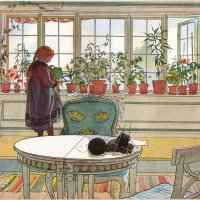
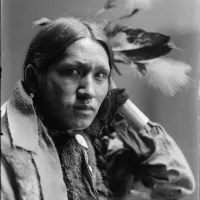
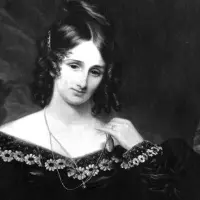
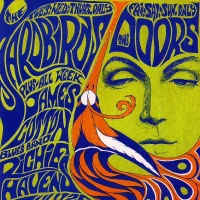
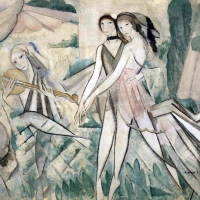


Reblogged this on First Night Design.
LikeLike
so very interesting –
LikeLike
Fascinating! Had heard os Sofonisba Anguissola and Artemsia Gentilleschi but was unaware of the other painters mentioned – will try to find the book, thankyou !
LikeLike
Very interesting post. Thank you! [I will keep reading your blog from now on]
LikeLike
Thank you all and thank you Jesus!!1
LikeLike
Reblogged this on 99 design.
LikeLike
What a fascinating story. Thank you.
LikeLiked by 1 person
Pingback: Sixteenth-Century Feminist: Lavinia Fontana | A R T L▼R K | First Night History
(In lieu of substantial dowery)He offered his prospective son in law his daughter’s potential earning power. That’s a good point
LikeLiked by 1 person
Reblogged this on Lenora's Culture Center and Foray into History.
LikeLike
Pingback: Sixteenth-Century Feminist: Lavinia Fontana | A R T L▼R K | First Night History
Pingback: Sixteenth-Century Feminist: Lavinia Fontana – spoondrift
Good read. Thank you.
LikeLike
Enlightening story! Thank you for posting
Tatyana at http://www.arts-ny.com
LikeLike
Lavinia Fontana was an amazing woman, artist, mother, and way ahead of her time. Thank you for a great story!
LikeLike
That is great. In many ways, we are still losing on what feminism should be. We criticize history for failing too but this is a great example for breaking that perception.
LikeLike